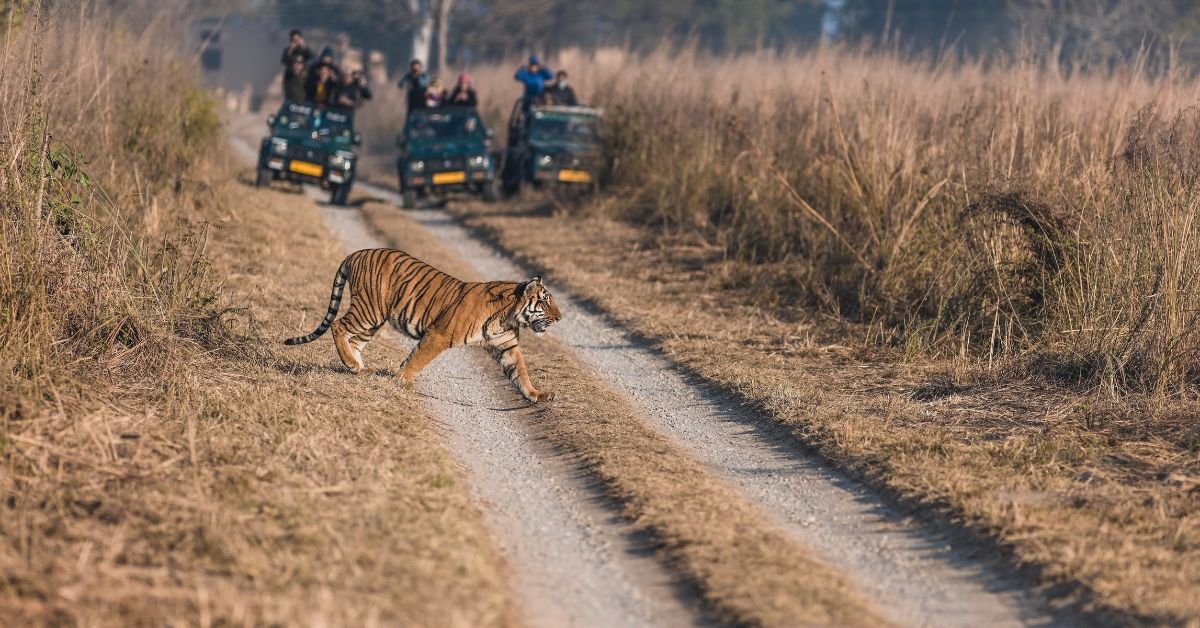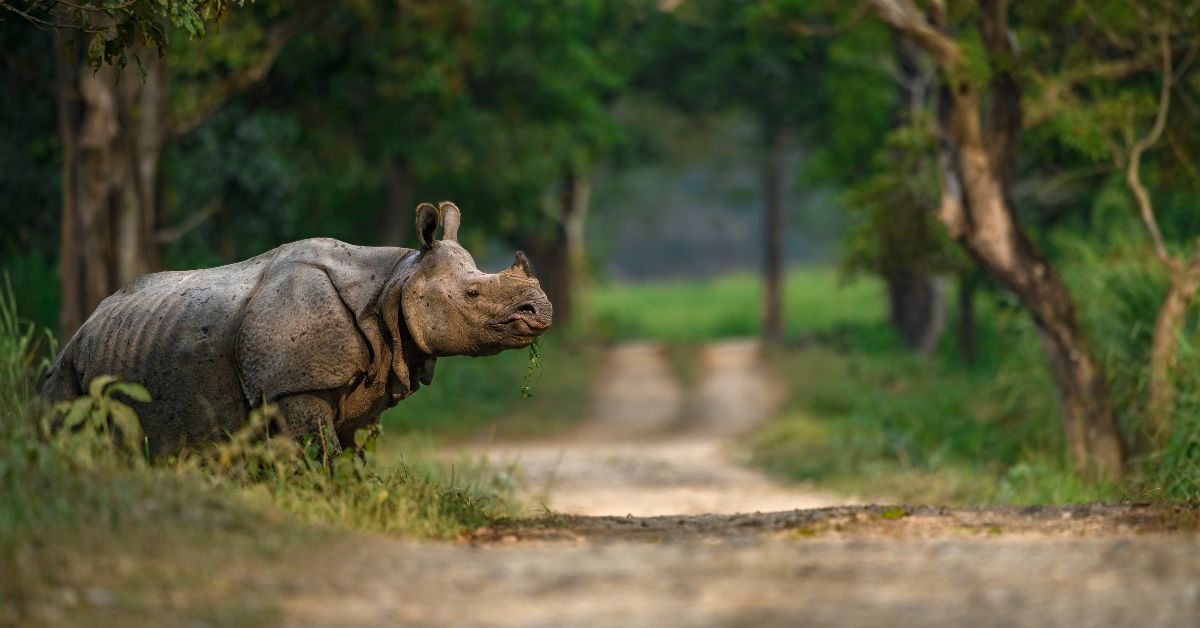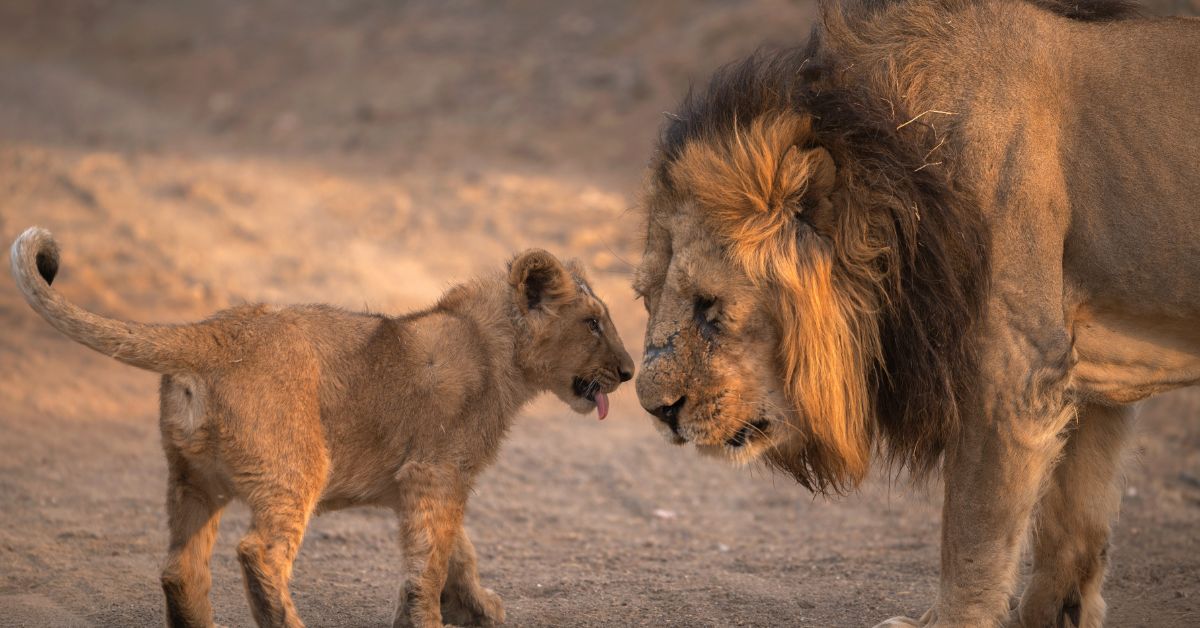Ski destinations, snow-capped mountains, and beach resorts are typical choices for a winter break vacation. However, envision this alternative — encountering a majestic leopard sprawled across a moss-covered branch in Kerala’s Periyar or tracking the elusive paw prints of a snow leopard in Ladakh’s Hemis. With 106 national parks, India’s diverse wildlife offers the perfect recipe for an adventurous winter getaway.
This year, consider bypassing the conventional options and embark on a national park safari to delve into India’s uncharted wilderness. We assure you that the experience will be well worth it!
Below is a compilation of eight magnificent national parks that stand out as ideal destinations during the winter season.
1. Jim Corbett
Located in Uttarakhand’s Ramnagar, Jim Corbett is one of the oldest and most famous national parks in India. Named after the renowned British hunter and conservationist Jim Corbett, the park was established in 1936, spanning across the districts of Nainital and Pauri Garhwal.
Home to a significant population of Bengal tigers, Jim Corbett National Park also hosts a variety of wildlife — including elephants, leopards, deer, langurs, crocodiles, and a diverse range of bird species.
Beyond its pristine wildlife, the park offers breathtaking views of diverse landscapes, featuring grasslands, riverine belts, and dense forests. The landscape and wildlife come to life particularly during October to June.

2. Keoladeo National Park
This national park is a must-visit for bird-watching enthusiasts. Located in Rajasthan, it was previously known as Bharatpur Bird Sanctuary. Recognised as a UNESCO World Heritage Site, the park is best visited from October to February to witness the diverse migratory birds.
Migratory birds from places like Siberia, Central Asia, and Europe flock to the park, making it a paradise for birdwatchers. Commonly spotted species include cranes, ducks, geese, pelicans, and various waders. The park is crisscrossed by a network of artificial lakes and wetlands, and visitors can explore it through boat safaris, bicycle rides, and rickshaw tours.
3. Kanha National Park
Situated in Madhya Pradesh, Kanha National Park is renowned for its successful conservation efforts, particularly regarding the Bengal tiger. With a significant tiger population, visitors stand a great chance of spotting these majestic creatures in their natural habitat.
The park’s diverse landscapes, ranging from dense forests to open grassy meadows, contribute to its picturesque allure. The Banjar and Halon valleys, along with the Banjaar river, further enhance its beauty.
In addition to tigers, Kanha is home to a variety of wildlife, including leopards, deer, wild dogs, and Indian bison (gaur), providing a rich and rewarding safari experience.

4. Pench National Park
Said to be an inspiration for Rudyard Kipling’s famous work ‘The Jungle Book’, Pench National Park is a paradise for nature lovers. Spread across the Seoni and Chhindwara districts of Madhya Pradesh, the park is named after the Pench river that gracefully flows through it.
Home to a diverse range of wildlife — including Bengal tigers, leopards, wild dogs, Indian bison (gaur), various deer species, langurs, and a wide array of bird species, this national park is a haven for wildlife enthusiasts.
The popular zones for wildlife safaris in Pench include Turia, Karmajhiri, and Jamtara, offering a mix of grasslands, forests, and water bodies that provide diverse habitats for various wildlife species.
5. Ranthambore National Park
Situated 130 km away from Jaipur, Ranthambore National Park in Rajasthan stands as a favourite spot for wildlife photographers from around the world. Nestled in the Sawai Madhopur district, it has gained fame for its pivotal role in tiger conservation.
Within the park, the historic Ranthambhore Fort adds a cultural and historical dimension to the wildlife experience. Beyond the majestic Bengal tigers, Ranthambhore is home to a diverse range of wildlife — including leopards, sloth bears, wild boars, sambar deer, spotted deer, langurs, and a vibrant array of bird species
6. Kaziranga National Park
Another UNESCO World Heritage Site, the Kaziranga National Park shelters the world’s highest number of one-horned rhinos. The Brahmaputra river flows through the park, creating riverine habitats and giving a picturesque landscape.
Also a birdwatcher’s paradise with a rich avian diversity, the park has over 500 species of birds. Additionally, it is home to a diverse range of mammals — including wild boars, Indian bison (gaur), sambar deer, hog deer, and various species of wild cats, such as leopards and jungle cats.

7. Gir National Park
Situated in Gujarat, Gir National Park is the sole place in the country where you have the opportunity to encounter Asiatic lions. Additionally, you can catch a glimpse of the traditional life of the Maldhari tribal communities who reside in and around the park.
The national park has 38 species of mammals, around 300 species of birds, 37 species of reptiles, and more than 2,000 species of insects, as per reports.
While the Asiatic lion takes centre stage, Gir is also home to a diverse range of wildlife — including leopards, jungle cats, Indian gazelles (chinkaras), spotted deer, sambar deer, wild boars, as well as various species of reptiles and birds.

8. Sundarbans National Park
The Sundarbans National Park — situated in the delta region of the Padma, Meghna, and Brahmaputra river basins in the Sundarbans Reserve Forest in West Bengal, India — holds the prestigious title of being a UNESCO World Heritage Site.
The Sundarbans stands as one of the largest mangrove ecosystems globally. The ecosystem is characterised by a network of tidal waterways, mudflats, and small islands formed by the confluence of several rivers.
Beyond its famed population of tigers, the Sundarbans boast rich biodiversity — including various species of deer, crocodiles, snakes, turtles, and an abundance of birdlife. This unique region also serves as a vital habitat for endangered Irrawaddy dolphins.
Edited by Pranita Bhat
No comments:
Post a Comment